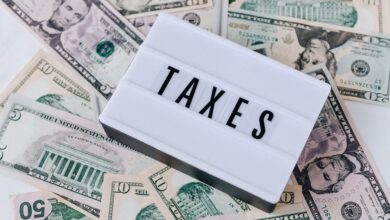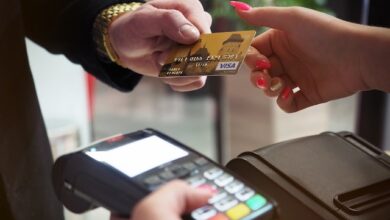9 Practical Tips for Paying Off a Loan

The United States’ total consumer debt reached $14.9 trillion in 2020. On top of a recession, the pandemic also brought on a huge increase in unemployment and applications for financial assistance.
When assistance couldn’t be found, a lot of people had to turn to loans or other avenues of getting into debt. If you were one of those people, you might now be stuck wondering how you should go about paying off a loan.
Luckily, we’re here with nine of the best tips you can use to get the ball rolling. Read on to learn everything you need to know.
1. Don’t Burn Yourself Out
The biggest thing to remember is to not burn yourself out. Setting realistic goals is important to do when you’re repaying a loan, but it’s also OK to reward yourself when you reach those goals.
Whether it’s buying yourself something you’ve been wanting or going out with friends, having something to look forward to when you meet your debt repayment goals is going to make things a lot easier as time goes on.
It can be easy to get excited and go all when you first start out, but you end up feeling overwhelmed and exhausted before you’ve paid off your loan. Taking things slowly and steadily can make it feel like you’re accomplishing more in the long run, and that’s because you are.
2. Create a Plan
Once you’re in the right mindset, the next step is to create a game plan for paying off your debt. Not only is it going to help you keep track of everything, but it’s also going to help you stay on top of your payments. Here are a few steps to help you get started:
- Create a list of your debts
- Track your spending for 30-60 days (or go back and pull bank records)
- Create a budget
When it comes to creating a budget that fits your needs, it’s going to depend solely on your preferences. There are, however, a few systems you can choose from.
The 50/30/20 method entails throwing 50 percent of your budget towards debts and other expenses, 30 percent to savings, and 20 percent to wants (like going out to eat, vacations, and other hobbies).
You can choose to pay everything in cash if you’d like as well. Using the Envelope System to separate your money into different categories for the budget.
Lastly, you can opt for the zero-based budget. This method gives every dollar in your budget a purpose so you have nothing left over at the end of the month. If you’re using this method to pay off debt, any extra money you’d usually have is assigned to your debt.
You can combine one or more of these methods into a system that works for you. The biggest thing to remember is that your plan should reflect what’s best for your needs and plan.
3. Stick With a Repayment Method
There are two main debt repayment methods you can utilize once you have a plan in place: snowball and avalanche.
With the snowball method, you start with the smallest debt and work your way up to the largest. You throw any extra money you have at the smallest until it’s paid off and work your way up from there.
With the avalanche method, the same principle applies, but you start with the debt bearing the highest interest and work your way down.
No matter which method you decide upon, you’re going to keep making the minimum monthly payments on all your other debts while throwing anything extra at the debt you’re working to widdle down.
4. Stop Using Your Credit Card
Once you have a plan set in place, there are a few things you can start doing to help eliminate debt even faster.
One of the best things to start off with is eliminating your credit card use. Just remember that this is a temporary measure and not something that you need to close all your credit accounts for.
Once everything is paid off, you might be tempted to close your credit accounts, but keeping it open is going to help you keep a good credit score.
5. Increase Your Income
Finding an extra source of income for at least 30 days can help you increase your monthly debt repayment. Whether you’ve had a business idea for a while or you’re thinking about taking on a side hustle selling pizzas, any extra amount of money you can make is going to help out in the long run.
There are plenty of side hustles that take no money to start, like being a food delivery driver, tutoring children, or even taking on a part-time job to work during weekends.
6. Try a Debt Consolidation Loan
If starting a side hustle isn’t in the cards for you, pulling out a debt consolidation loan can help you get things under control. This method is best for those with a lot of different sources of debt, or if you have a loan payment or credit card with a high interest that’s getting out of control.
Taking out a personal loan with Plenti can be a great way to consolidate your debt into one monthly payment, typically with a low-interest rate.
This method isn’t for everyone, though. You have to be able to qualify for the loan and ensure you’re still getting a good deal.
7. Pay More Than the Minimum
This might seem obvious, but it’s true. The same goes for making extra payments each month when you can.
If you run into extra cash, it’s simple to say, “I’ll put this away to use towards next month’s bill,” but if you’re bad with saving money then this method leaves nothing but room for temptation. Instead, you can (and should) immediately put that money towards the debt you’re aiming to pay off quickly.
If you’re disciplined enough to put the money into a separate account and leave it there until the next 30-day payment cycle rolls around, then that’s exactly what you should do.
It can also feel tempting to simply make the minimum monthly payments on everything and then save up to pay off your debt in one lump sum, but that’s not going to help either. If anything, it’s going to leave you with more payments since interest is going to keep accruing.
8. Consider Opening a Balance Transfer Card
If a debt consolidation loan doesn’t sound appealing to you, you might be able to open a balance transfer credit card. This is not only going to allow you to save money on interest, but a lot of cards with an introductory APR-free period, so you’re also going to be saving money on interest.
It isn’t a “quick fix” to paying off your debt, but neither is a consolidation loan. It doesn’t mean you suddenly have a paid off loan. It just gives you more of an opportunity to leave behind high-interest rates.
This can give you not only more time to pay off a specific debt, but it’s going to save you money in the process.
9. Check Into Cash Back
If you’re a member of any websites like Rakuten or RetailMeNot, there’s a chance you might have cashback. The same goes for credit card reward balances that you haven’t tapped into.
If this sparked a memory for you, it might be time to check out those account balances to see if you have any money that can be placed towards debt.
If you don’t have any accounts with websites like this, you should look into getting one. Unlike a credit card with cashback benefits, having an account with companies that give you cash back for certain items means you don’t have to go further into debt to reap the rewards. You can pay cash for items and still use any extra you earn to pay off debt.
If you’re already in debt, however, it’s best to simply stick with online retailers that offer this service. You shouldn’t go open a new credit account simply for the cashback benefits and put yourself in a place to accrue more debt as a result.
Remember These Tips for Paying Off a Loan
When it comes to paying off a loan, remembering these few tips can help you out in the long run. It can feel daunting to buckle down and commit to paying off debt, but the faster you get there, the more you’ll realize you were missing out on a lot of freedom.
For finance articles to help you out along the way, check out the rest of our website.





